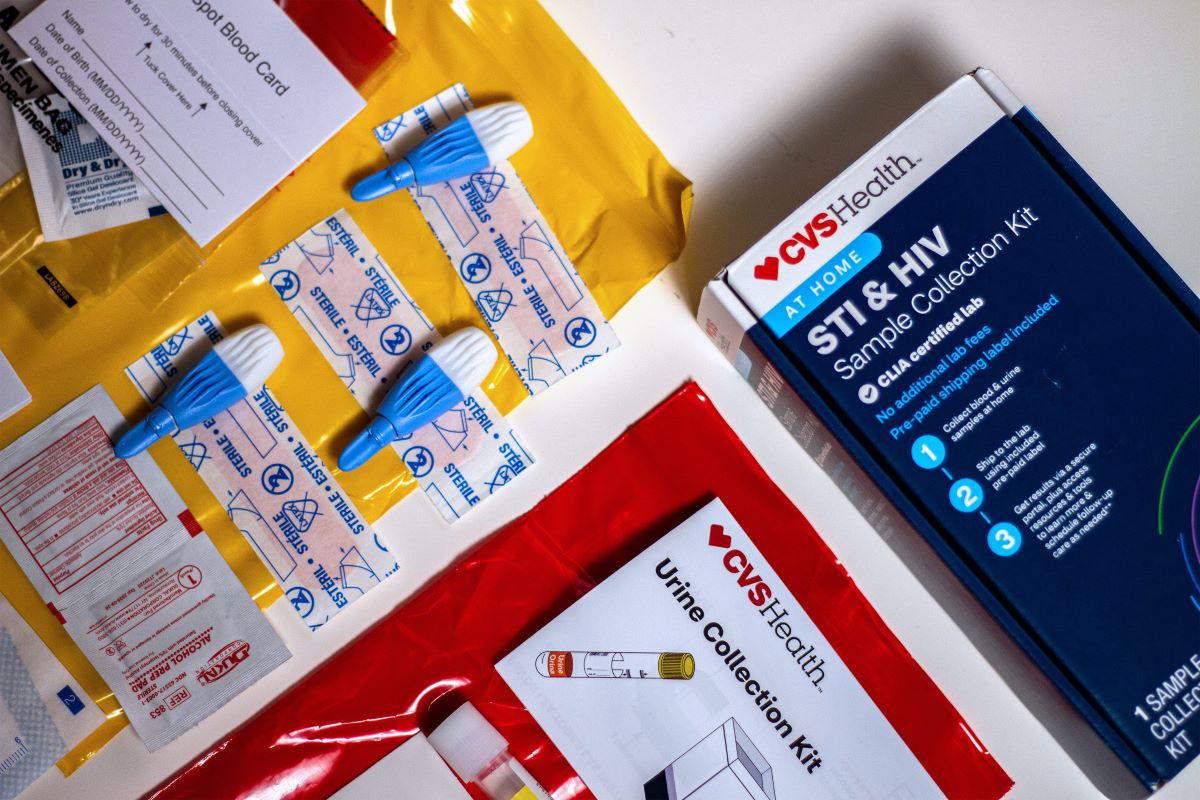

Finance
How Much Does Entyvio Cost With Insurance
Published: November 23, 2023
Find out the cost of Entyvio with insurance and explore financing options to manage your healthcare expenses.
(Many of the links in this article redirect to a specific reviewed product. Your purchase of these products through affiliate links helps to generate commission for LiveWell, at no extra cost. Learn more)
Table of Contents
- Introduction
- Understanding Entyvio
- The Role of Insurance in Entyvio Costs
- Factors Affecting Entyvio Cost with Insurance
- Insurance Coverage for Entyvio
- Co-pays and Deductibles for Entyvio
- Prior Authorization for Entyvio
- The Importance of Reviewing Insurance Coverage
- Strategies to Reduce Entyvio Costs with Insurance
- Conclusion
Introduction
Welcome to the world of healthcare and insurance! If you or a loved one are dealing with a chronic condition like inflammatory bowel disease (IBD), you’re probably familiar with the challenges of managing your health and the associated costs involved.
One medication that has become a lifeline for many IBD patients is Entyvio. This prescription drug, also known by its generic name vedolizumab, is used to treat conditions such as Crohn’s disease and ulcerative colitis.
But as with any modern medicine, the cost of Entyvio can be a concern. Fortunately, insurance can help alleviate some of the financial burden by covering part of the expenses associated with this medication.
In this article, we will delve into the world of Entyvio costs with insurance, exploring the various factors that can influence the final price you pay. We will also discuss the ins and outs of insurance coverage for Entyvio, including copays, deductibles, and prior authorization.
Armed with this knowledge, you can better navigate the complex landscape of insurance and healthcare, making informed decisions about your treatment options while keeping the financial aspect in mind.
So, let’s dive in and learn more about how insurance can help mitigate the cost of Entyvio and ensure you receive the treatment you need without breaking the bank.
Understanding Entyvio
Before we delve into the intricacies of insurance coverage and costs, let’s take a moment to understand what Entyvio is and how it works.
Entyvio, or vedolizumab, is a type of medication known as a biologic. It is specifically designed to target and block certain proteins in the body’s immune system that contribute to inflammation in the gastrointestinal tract. By inhibiting these proteins, Entyvio helps reduce inflammation and control the symptoms of conditions such as Crohn’s disease and ulcerative colitis.
Unlike some other biologics, which can have a more generalized impact on the immune system, Entyvio is designed to be more gut-selective. This means that it primarily works in the intestines, minimizing the potential for systemic side effects in other parts of the body.
Entyvio is administered through an intravenous infusion, typically given in a healthcare facility. The dosing schedule varies depending on the condition being treated, but it is usually administered initially and then repeated at regular intervals to maintain the desired therapeutic effect.
It’s important to note that Entyvio is a prescription medication and should only be used under the guidance and supervision of a healthcare professional. Your doctor will determine if Entyvio is a suitable treatment option for your specific condition and will closely monitor your response to the medication.
Now that we have a basic understanding of what Entyvio is, let’s explore how insurance can play a role in managing the costs associated with this medication.
The Role of Insurance in Entyvio Costs
When it comes to the cost of Entyvio, insurance can be instrumental in making the treatment more affordable. Insurance coverage helps mitigate the financial burden by sharing the expenses associated with the medication.
Insurance plans vary in terms of coverage, so it is crucial to review your policy to understand what is covered and what costs you may be responsible for. Typically, insurance coverage for Entyvio falls under the prescription drug benefit of your plan, which outlines how medications are covered and at what cost.
Under your insurance plan, the cost of Entyvio may be split into different components:
- Pharmacy Benefit: This includes the cost of the medication itself, which is usually covered by your insurance. However, it is important to check if there are any restrictions or limitations, such as a formulary, which lists the medications covered by your plan. If Entyvio is not listed on the formulary, you may need to explore alternatives or seek an exception from your insurance company.
- Medical Benefit: In addition to the pharmacy benefit, there may be other costs associated with receiving Entyvio, such as the administration of the medication through an infusion. These costs fall under the medical benefit of your insurance plan and may be covered separately. It is important to understand the details of your coverage, including any copays or coinsurance.
- Deductibles and Out-of-Pocket Costs: Your insurance plan may have a deductible, which is the amount you need to pay out of pocket before your insurance coverage kicks in. Once you have met your deductible, you may still be responsible for a portion of the costs through copays or coinsurance. Understanding these cost-sharing elements can give you a clearer picture of what you can expect to pay for Entyvio.
It’s worth noting that insurance coverage and costs can vary significantly depending on the specific insurance plan you have. Some plans may provide more comprehensive coverage for biologic medications like Entyvio, while others may have stricter limitations or higher out-of-pocket costs.
Now that we understand the role of insurance in Entyvio costs, let’s explore the factors that can influence how much you may pay for this medication with insurance coverage.
Factors Affecting Entyvio Cost with Insurance
Several factors can influence the cost of Entyvio with insurance coverage. Understanding these factors can help you anticipate and navigate the potential financial implications of your treatment.
Here are some key factors that can affect the cost of Entyvio:
- Insurance Plan Type: The type of insurance plan you have can significantly impact your out-of-pocket costs for Entyvio. Plans with a higher premium may offer more comprehensive coverage, with lower copays and deductibles. On the other hand, plans with lower premiums may come with higher out-of-pocket costs. It’s important to review your plan’s details and consider how they align with your budget and healthcare needs.
- Medication Formulary: Formularies are lists of medications covered by your insurance plan. Some plans may have specific criteria or restrictions for coverage, including step therapy requirements or prior authorization. If Entyvio is not on your plan’s formulary, you may need to explore alternative medications or work with your healthcare provider to seek an exception or appeal the coverage decision.
- Copays and Coinsurance: Copays and coinsurance are the portion of the cost you are responsible for paying when you receive Entyvio. Copays are a fixed amount, such as $30 per infusion, while coinsurance is a percentage of the cost, such as 20%. Understanding these cost-sharing elements is essential for budgeting and managing your healthcare expenses.
- Prior Authorization: Some insurance plans require prior authorization for medications like Entyvio. This means that your healthcare provider needs to submit documentation to your insurance company, demonstrating the medical necessity of the medication. The prior authorization process can add an extra step to accessing Entyvio and may impact the timing of your treatment.
- Out-of-Pocket Maximums: Insurance plans typically have an annual out-of-pocket maximum, which is the maximum amount you would have to pay in a given year. Once you reach this cap, your insurance plan covers all other eligible medical expenses, including Entyvio, at 100% for the remainder of the year. Knowing your out-of-pocket maximum can provide peace of mind and help you plan your healthcare expenses.
These factors can vary depending on your specific insurance plan, so it is crucial to review your policy documents or contact your insurance provider directly to understand how they affect the cost of Entyvio in your particular situation.
Now that we have explored the factors influencing Entyvio costs with insurance coverage, let’s delve deeper into understanding the specifics of insurance coverage for this medication.
Insurance Coverage for Entyvio
Insurance coverage for Entyvio plays a crucial role in determining the affordability of this medication. Understanding how your insurance plan covers Entyvio can help you estimate your out-of-pocket costs and make informed decisions about your treatment.
Here are some key points to consider regarding insurance coverage for Entyvio:
- Formulary Coverage: As mentioned earlier, insurance plans typically have a list of approved medications called a formulary. Entyvio may be included on the formulary, but it’s important to check whether it is covered under a preferred tier with lower out-of-pocket costs or a non-preferred tier with higher costs.
- Generic or Brand Name: Insurance plans may prefer generic medications over brand-name drugs. If a generic alternative to Entyvio becomes available, your insurance plan might encourage its use by providing more favorable coverage. However, as of now, Entyvio does not have a generic equivalent.
- Prior Authorization: Many insurance plans require prior authorization for Entyvio. This means that your healthcare provider needs to submit documentation to your insurance company, demonstrating the medical necessity of the medication for your specific condition. Failure to obtain prior authorization may result in the denial of coverage or higher out-of-pocket costs.
- Copays and Coinsurance: Your insurance plan may have set copayments or coinsurance amounts for Entyvio. Copayments are a fixed amount you pay for each dose or treatment, while coinsurance is a percentage of the total cost. The specific amounts can vary depending on your plan, so it is essential to understand these cost-sharing elements.
- Out-of-Pocket Maximum: Insurance plans often have an out-of-pocket maximum, which is the most you will have to pay for covered services in a calendar year. Once you reach this maximum, your plan typically covers all eligible expenses, including Entyvio, at 100%. Knowing your out-of-pocket maximum can provide peace of mind and help you plan your finances.
- Pharmacy Networks: Some insurance plans may require you to use specific pharmacies or specialty pharmacies to receive coverage for Entyvio. It is important to understand any restrictions or preferred network pharmacies associated with your plan to ensure seamless access to the medication.
Remember, insurance coverage for Entyvio can vary depending on your specific plan. It’s vital to review your policy documents or contact your insurance provider directly to understand the specifics of your coverage, including copays, coinsurance, and any other requirements or limitations.
Next, let’s explore the role of copays and deductibles in managing Entyvio costs with insurance coverage.
Co-pays and Deductibles for Entyvio
Co-pays and deductibles are important aspects of insurance coverage that can significantly impact the cost of Entyvio. Understanding these terms and how they relate to your coverage can help you plan and budget for your treatment.
Co-pays:
A co-pay is a fixed amount you are responsible for paying each time you receive a dose of Entyvio. The specific co-pay amount can vary depending on your insurance plan and the details of your coverage. For example, your plan might have a $50 co-pay for each infusion of Entyvio.
It’s important to note that co-pays can apply separately to the medication itself and the administration of the medication, which is typically done through an intravenous infusion. Therefore, you may have a co-pay for both the pharmacy benefit and the medical benefit of Entyvio.
Understanding your co-pay amounts is crucial for budgeting and planning your healthcare expenses. Be sure to review your insurance plan documents or contact your insurance provider directly to determine the specific co-pays associated with Entyvio.
Deductibles:
A deductible is the amount you must pay out of pocket before your insurance coverage kicks in. For example, if you have a $1,000 deductible, you will need to pay $1,000 of your own money towards Entyvio costs before your insurance starts paying its share.
It’s important to note that deductibles can apply to both the medication and the administration of Entyvio, similar to co-pays. However, deductibles are typically associated with the medical benefit rather than the pharmacy benefit.
Once you have met your deductible, your insurance coverage will begin, and you will typically be responsible for paying either a co-pay or coinsurance for the remaining costs of Entyvio. It’s essential to review your plan details to understand how deductibles and out-of-pocket expenses are structured.
Keep in mind that deductibles reset annually, meaning you will need to meet your deductible again at the start of each new coverage year. Understanding the timing and amount of your deductible is crucial for managing your healthcare expenses.
Now that we have explored co-pays and deductibles associated with Entyvio, let’s discuss the importance of reviewing your insurance coverage regularly.
Prior Authorization for Entyvio
Prior authorization is a process used by insurance companies to determine if a medication, such as Entyvio, is medically necessary before providing coverage. It requires your healthcare provider to submit documentation to your insurance company, detailing the reasons why Entyvio is the most appropriate treatment option for your specific condition.
The purpose of prior authorization is to ensure that the medication is being used appropriately and to control costs for both the insurance company and the patient. It also helps prevent unnecessary or potentially harmful treatments from being prescribed.
Here are some key points to understand about prior authorization for Entyvio:
- Initiating the Process: Your healthcare provider will be responsible for initiating the prior authorization process. They will gather the necessary medical information and submit it to your insurance company for review. This may require completing specific forms or providing additional documentation, such as medical records or test results.
- Decision Timeframe: Insurance companies have specific timeframes within which they must make a decision regarding prior authorization. This can range from a few days to a few weeks. It is important to follow up with your provider and insurance company to ensure a timely resolution.
- Approval or Denial: After reviewing the submitted information, your insurance company will either approve or deny the prior authorization request. If approved, you can proceed with obtaining Entyvio knowing that it will be covered by your insurance. If the request is denied, you and your healthcare provider may have the option to appeal the decision.
- Appealing a Denial: If your prior authorization request is denied, you have the right to appeal the decision. This involves providing additional supporting documentation or justifying the medical necessity of Entyvio for your condition. It is crucial to work with your healthcare provider and insurance company to follow the appropriate appeals process.
- Timing Considerations: Keep in mind that the prior authorization process can take time, and it may delay the start of your Entyvio treatment. It is important to plan ahead and initiate the process well in advance, ensuring you have the necessary coverage in place when you need it.
Understanding the prior authorization process for Entyvio is crucial for accessing and obtaining insurance coverage for this medication. It is recommended to work closely with your healthcare provider and insurance company to ensure all necessary steps are taken and any potential delays are minimized.
Now that we have covered prior authorization, let’s discuss the importance of regularly reviewing your insurance coverage for optimal cost management.
The Importance of Reviewing Insurance Coverage
Regularly reviewing your insurance coverage is an essential aspect of managing the costs associated with medications like Entyvio. Insurance plans can change over time, and staying informed about your coverage ensures that you are maximizing the benefits of your policy and minimizing any unexpected expenses. Here are some reasons why reviewing your insurance coverage is crucial:
- Changes in Coverage: Insurance companies can modify coverage policies, formularies, copays, deductibles, and other aspects of your plan. By reviewing your coverage regularly, you can stay up-to-date on any changes that might affect the cost of your Entyvio treatment.
- Access to Preferred Providers: Insurance plans often have preferred provider networks, which may include specific healthcare facilities, pharmacies, or specialty pharmacies. Reviewing your coverage allows you to ensure that the providers you prefer to work with are still considered in-network, which can result in lower costs and smoother authorization processes.
- Medication Formulary: The formulary, or the list of covered medications, can change over time. It’s important to review your plan’s formulary to ensure that Entyvio remains covered and to check if any changes have been made to the cost-sharing tier it falls under. This allows you to be prepared for any potential changes in your out-of-pocket expenses.
- Updates in Prior Authorization Requirements: Insurance companies may revise their prior authorization requirements, such as the documentation or criteria needed to secure coverage for Entyvio. By keeping up with these updates, you can ensure that you and your healthcare provider meet the necessary requirements and minimize delays in receiving your medication.
- Opportunities for Cost Savings: Insurance plans may offer additional programs or benefits that can help reduce the costs of your Entyvio treatment. For example, they may provide co-pay assistance programs or offer alternative pharmacy networks with lower copayments. By reviewing your coverage, you can identify any opportunities for cost savings that you might have overlooked.
Regularly reviewing your insurance coverage helps you stay proactive and informed about any changes that could impact the cost and accessibility of your Entyvio treatment. It also allows you to explore cost-saving options and take advantage of any additional benefits provided by your insurance plan.
Remember to consult your insurance plan documents, reach out to your insurance provider directly, or work with a healthcare advocate if you need assistance in understanding your coverage.
Now, let’s explore some strategies to help reduce Entyvio costs with insurance coverage.
Strategies to Reduce Entyvio Costs with Insurance
Managing the costs of Entyvio can be challenging, but there are several strategies you can employ to help reduce your expenses when using insurance coverage. By being proactive and exploring these options, you can minimize the financial burden associated with this medication. Here are some strategies to consider:
- Explore Specialty Pharmacy Options: Some insurance plans have preferred specialty pharmacy networks that offer lower copays or other cost-saving programs for medications like Entyvio. Investigate whether there are preferred pharmacies available within your network, and consider utilizing their services to reduce your out-of-pocket costs.
- Consider Generics or Biosimilars: Although there is currently no generic equivalent for Entyvio, in the future, biosimilar options may become available. These medications have similar efficacy and safety profiles but may come at a lower cost. Stay informed about the development of biosimilars and discuss with your healthcare provider if they become available as a more affordable alternative.
- Utilize Patient Assistance Programs: The manufacturer of Entyvio may offer patient assistance programs that provide financial support to eligible individuals. These programs can help cover the costs of the medication for those who meet specific income requirements. Check with the manufacturer or speak to your healthcare provider to explore if you qualify for any patient assistance programs.
- Optimize Your Insurance Plan: Evaluate your insurance plan and consider whether there are more suitable options available to you. This might involve switching to a plan with lower deductibles or copays, or one that has a more comprehensive prescription drug benefit. Keep in mind that open enrollment periods or life events like job changes may allow you to make changes to your insurance coverage.
- Coordinate with Your Healthcare Provider: Collaborate closely with your healthcare provider to ensure that all necessary steps, such as prior authorization, are taken correctly. This can help avoid any delays or potential denials of coverage. Your healthcare provider may also have valuable insights or resources to help manage the cost of your Entyvio treatment.
- Review Your Formulary and Coverage: Regularly review your insurance plan’s formulary and coverage details. Confirm that Entyvio remains covered and check for any changes in copayments or other cost-sharing requirements. Staying informed about your coverage can help you anticipate and plan for any potential changes in your out-of-pocket costs.
It is essential to be proactive and advocate for yourself in managing the costs of Entyvio with insurance coverage. By exploring these strategies and staying informed, you can work towards minimizing expenses and ensuring that you have access to the treatment you need.
Remember to consult with your healthcare provider and insurance company to fully understand your options and determine the strategies that are most appropriate for your specific situation.
Now, let’s wrap up our discussion on Entyvio costs with insurance coverage.
Conclusion
Managing the costs of Entyvio, a crucial medication for treating inflammatory bowel disease, can be challenging. However, with the support of insurance coverage and strategic approaches, you can alleviate some of the financial burden. Understanding your insurance plan, including its coverage, copays, deductibles, and prior authorization requirements, is essential in navigating the complexities of Entyvio costs.
Regularly reviewing your insurance coverage is key to staying informed about any changes that may impact the cost of Entyvio. By staying proactive, you can explore opportunities for cost savings, such as utilizing preferred specialty pharmacies, considering biosimilars if available, and taking advantage of patient assistance programs. Optimizing your insurance plan and coordinating effectively with your healthcare provider can also help ensure smooth access to the medication.
It’s important to remember that insurance coverage varies depending on your specific plan, and it’s always advisable to consult your insurance provider directly and review your policy documents for accurate and up-to-date information.
By implementing these strategies and maintaining a proactive approach, you can better manage the costs associated with Entyvio and focus on your health and well-being. By leveraging the benefits of insurance coverage, you can receive the treatment you need while minimizing the financial impact.
Remember that you are not alone in this journey. Reach out to your healthcare provider, patient advocacy organizations, and support networks for guidance and assistance. By working together, you can navigate the complexities of insurance coverage and focus on achieving the best outcomes for your health.
So, take control of your financial well-being and make informed decisions about your Entyvio treatment. With the right strategies and support, you can find a balance between managing the costs and prioritizing your health and quality of life.














